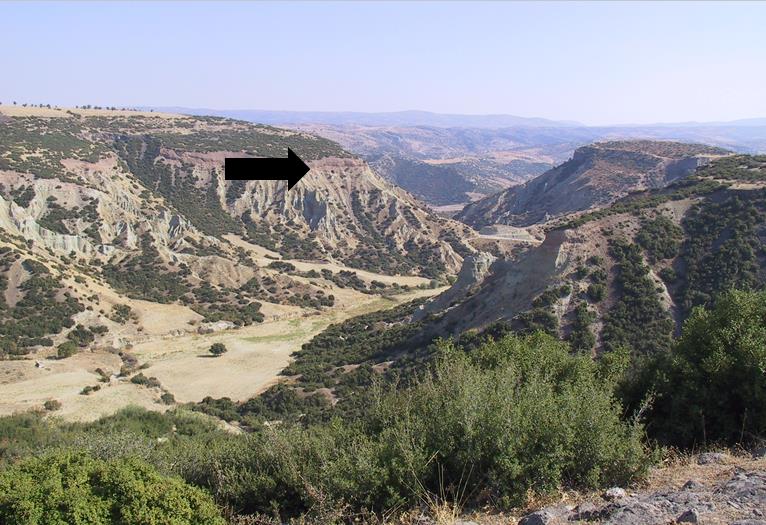Homo erectus has been living in western Turkey for much longer than could be proved so far. This is demonstrated by the discovery of a stone tool from the Stone Age in that area. The tool is between 1.17 and 1.24 million years old and has been discovered by scientists in sedimentary deposits of an old bed of the Gediz river. The research will be published today in the authoritative Quaternary Science Reviews journal.
An international team of researchers, led by Professor Darrel Maddy of the University of Newcastle, performed an extensive, protracted research with the aim of reconstructing the ancient river courses. The team also comprises scientist from the University of Twente, the University of Wageningen, the University of Utrecht, the Free University Amsterdam as well as universities from the United Kingdom and Turkey. The aim is to collect data in order to reconstruct the climate and the tectonic activity of the last two million years. Tom Veldkamp of the ITC faculty of the University of Twente has been involved in this project for over ten years: “It has been a very special experience to discover this tool in a deserted riverbed. The discovery concerns a tool that has been crafted by early humans. This is the earliest, accurately dated human artefact that has been discovered in Turkey so far.” Other tools have been discovered as well in the past, but it is often impossible to establish their absolute age. However, in the case of this artefact, it was possible: “We managed to establish the date very precisely on the basis of the streams of lava that dammed up the river in those days. These streams of lava show that the sedimentary deposits in which the tool has been found, were formed between 1.17 and 1.24 million years ago. This dating constitutes the first indisputable evidence that there was human life in western Turkey much earlier than could be proved until now.”
The discovery of the tool allows us to reconstruct the migration of early humans with increasing accuracy. Veldkamp: “This allows us to have a better insight into the spread of our ancestors and the origins of the first Europeans. It is likely that the Anatolic peninsula has been the transit that has led our ancestors from Asia to Europe. The place of discovery of the tool is less than 200 km form the Bosporus, over which the early humans probably crossed to the European continent.

Photograph: the area in which the tool has been found.
Note for the press
For more information or requests for interviews, please contact Prof. Dr. Tom Veldkamp B Sc, +31 (0)53 487 4269, or UT Public Relations Officer Joost Bruysters (+31 (0)53 489 6993).





